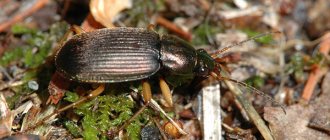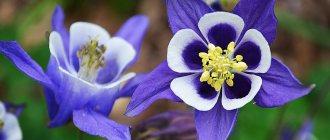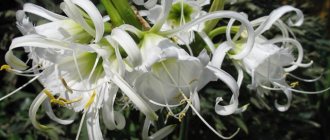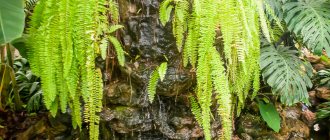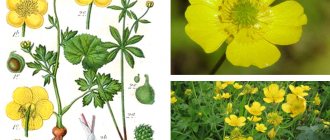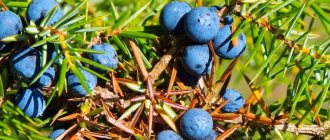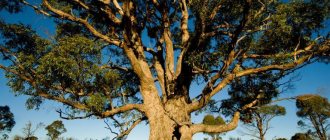Related Posts
Dangerous diseases: from bedbugs to humansBoric acid - properties, use, contraindications
- Fighting cockchafer larvae in the garden. Simple remedies
The weevil often settles next to a person and very quickly makes pasta, flour and cereals unusable. It can be found in any country. Despite the fact that these bugs cannot fly, their migration to new territory occurs at record speed.
If a weevil is found in an apartment, you need to get rid of it immediately, since females lay a lot of eggs. By the way, you can only see adult insects, and the eggs and larvae are inside the cereal grains. Therefore, it is unknown how many more of them will appear. It is important to know how to get rid of weevils in an apartment. This is a serious issue that requires careful consideration.
Apple flower beetle
The most famous and dangerous pest in our gardens, it has chosen the apple tree for life, and less often settles on the pear tree. A brownish-gray beetle about 4 mm long with a thin, curved proboscis overwinters in cracks in the bark, under the leaves.
In early spring, at an average daily temperature of 6°C, it emerges from its shelter and moves into the trees. At first it feeds on the kidneys, making punctures; as a result, “crying kidneys” can be seen on them - droplets of clear liquid.
Then the time comes to lay eggs; for this, the females gnaw holes in the flower buds and lay one egg in each bud. The larvae, hatching from the eggs, gnaw out the contents of the buds and fill them with waste products.
Buds damaged by apple blossom beetle. Photo by the author
Unopened petals dry out, forming brown caps under which larvae or pupae hide. A new generation of beetles feeds on the leaves, gnawing small holes in them, and spreads throughout the garden.
Particularly great damage from the flower beetle is felt in years with weak flowering of the apple tree; in this case, the apple harvest may not be expected.
Processing terms and rules
Treatment of garden and vegetable crops against weevils must be carried out several times. In early spring, along bare branches and buds, flowering plants, after the appearance of the ovary.
Chemical weevil poison should be used no later than 4 weeks before the expected time of fruit ripening.
Trees
Fruit trees need to be treated for pests several times a season. In the fall, for additional protection from beetles, the trunks should be whitened.
Processing times:
- In early spring, while the buds are in the green cone stage.
- At the moment of inflorescence formation and the appearance of single buds. If the treatment is carried out later, bees and other beneficial insects may be harmed.
- No later than 5 days after flowering ends.
Spraying against weevils is best done in the evening, in warm, windless weather.
Shrubs
Shrubs can be sprayed less frequently than trees. Carry out 2 treatments in the spring before and after flowering, and after the berries appear, there is no particular need for spraying.
Since weevils often overwinter in the soil, re-treatment should be carried out in the fall, after harvesting. Before spraying, you need to remove all plants with signs of disease and dig up the soil around the bushes.
Berry and vegetable plants
Berry and vegetable plants require frequent processing, since weevils most often settle on them.
Processing calendar:
- Before sowing, you can soak the seeds in Epin’s solution to increase the plant’s resistance to pests;
- when planting seedlings in the ground;
- after emergence;
- during budding and flowering;
- during the entire growing season, if signs of pest infestation appear;
- late autumn.
Additionally, it is necessary to regularly inspect plants and mechanically treat them.
Raspberry-strawberry weevil
As the name suggests, it settles on raspberries, blackberries, and strawberries. A small grayish-black beetle 2-3 mm long eats young leaves and buds in the spring. By the time of flowering, females lay eggs one at a time inside the bud, while gnawing on the peduncle.
Traces of the weevil's activity are clearly visible: the buds break and fall off or wither and hang on the remains of the peduncle. The larvae eat the buds and pupate there. A new generation of beetles feeds on leaves, gnawing small holes in them, and then goes to wintering places - under fallen leaves or lumps of earth.
One female can lay up to 50 eggs, damaging a corresponding number of buds and leaving you without a strawberry or raspberry harvest.
Silver weevil / Phyllobius argentatus
This beetle is also called the golden leaf weevil, as it lives on the leaves of trees. Refers to slopes.
A small body, only 3–6 mm, is covered with golden scales, which give the beetle an unusually beautiful appearance. The paws and long antennae are yellow. The eyes are quite large in proportion to the body.
It is found in European countries, and in Russia it has inhabited the broad-leaved forests of the central part of the country. There are small populations in the North Caucasus.
12
Fruit goose
A beetle up to 6 mm long, crimson with a golden-greenish tint. Harmful on plum, apple, and apricot trees. The beetles emerge from their wintering grounds at an average daily temperature of 8°C, first feed on the buds, gnawing deep holes in them, then damage the fruits by piercing the skin. The injection sites are covered with dark cork tissue, forming characteristic tubercles.
After the formation of the ovaries, the females lay one or several eggs in the fruits. They gnaw out a small chamber in the fruit, place an egg in it and seal it with excrement. In this case, infection occurs with spores of fruit rot pathogens. In addition, the female gnaws the stalk, weakening the supply of nutrients.
The purpose of these actions is to create the most favorable conditions for the larva, which can only live in fruits affected by fruit rot. As a result, plums or apples fall prematurely, the pulp rots, and a larva develops within one month. The new generation of beetles remain in the soil or move to trees, where they can damage buds.
Mower in residential premises
The weevil in an apartment or private house is a common phenomenon. In a human home it is always warm, cozy, and there is something to eat. This is the most favorable environment for reproduction. In order not to say goodbye to stocks of grain and cereals, owners of apartments and houses must respond in a timely manner to the appearance of unwanted guests and systematically carry out preventive measures in order to prevent their return.
First of all, all cereal stocks must be sorted out, the flour sifted, and any pests found must be collected and destroyed. An effective way to disinfect damaged cereals is by frying or freezing. The described method also has its drawbacks: after prolonged exposure to extreme temperatures, the room will have to be thoroughly cleaned.
Cherry weevil
A golden-green with a crimson tint, the beetle is 5-9 mm long with a purple rostrum and thick light hairs covering the entire body. Found on cherries, cherries, plums, cherry plums, and apricots. It emerges from wintering grounds relatively late, during mass cherry blossoms.
The beetles first feed on buds, flowers and young leaves. Two weeks after flowering, females gnaw chambers in the pulp of the fruit that reach the seed. Having made a hole in the soft bone, the female lays eggs there.
The hatched larva feeds on the contents of the immature seed, then leaves the fruit and goes into the soil. At the beginning of autumn, a new generation of beetles appears and overwinters in the soil. The massive appearance of the cherry weevil can not only sharply reduce the harvest, but also destroy trees that lose their leaves.
Basic methods of dealing with elephants
Agronomists and gardeners starting to grow crops must take a set of measures to destroy and prevent the appearance of weevils. It is also necessary to get rid of pests at the household level.
Large agricultural companies practice the following methods of combating elephant beetles:
- Deep plowing and loosening of the soil in the spring-autumn period is a real opportunity to destroy eggs laid in the ground or larvae preparing for wintering.
- Infected plants are removed and burned.
- Practice rational crop rotation.
- Application of modern insecticides.
The measures described above to combat weevils in combination will ensure a significant reduction in the number of insects in the fields and in storage facilities.
Plum borer, or copper plum borer
A small beetle 3-4.5 mm long, its bronze body with a copper tint is covered with thin adjacent hairs. The borer damages cherries, sweet cherries, plums and other stone fruits, and appears less frequently on apple and pear trees. The beetles emerging from their wintering grounds feed on buds, flowers, pedicels and young fruits.
Females lay eggs in the developing fruits one at a time and gnaw the stalk. The emerging larvae feed on the pulp of fallen fruits. The larvae pupate in the soil, and in the fall a new generation of beetles emerges, feeding on the leaves until the first frost. The beetles overwinter under plant debris on the soil surface.
One female can lay up to 120 eggs; damaged carrion can account for up to 40% of the harvest.
Traditional methods of fighting weevils
Insects with a long trunk do not tolerate ash, mustard, ammonia and laundry soap. Solutions with one of the above components, evenly sprayed over the surface of the plantings, if not completely get rid of the invasion, will significantly reduce the number of pests.
No less effective are infusions of tansy, wormwood and capsicum.
When folk remedies fail, homeowners resort to using chemicals. To prevent fruit poisoning, processing must be carried out in strict accordance with the instructions. The following drugs are popular today: karbofos, Inta Vir, Actellik, Antonem-E, Nemabakt, etc.
Rational application of the pest control methods described above will allow you to get rid of it for a long time and protect the crop.
Pear tube gun
This beetle is distinguished by its blue-green or bronze-green color; the body length of an adult insect is up to 9 mm. In early spring it feeds on buds and young leaves, and begins active life at a temperature of 18-20°C.
A couple of weeks after leaving the wintering grounds, mating begins, and the female prepares a special place for laying eggs - she bites off leaf petioles and rolls them into a tube, 6-8 pieces at a time.
Cigars made from leaves with pear worm larvae
In such a tube, shaped like a cigar, the female lays up to 15 eggs. The larvae feed on the rolled up leaves for a while, then the “cigar” falls off and the larvae eat the fallen leaves. Later they go into the soil, where they pupate.
Adult insects remain for the winter in the soil or under fallen leaves in the garden. In addition to pears, the pipe roller damages quince, grapes, and some forest species - alder, linden, and walnut.
Chemicals
When it rains for days, the strawberry harvest melts before our eyes, and with it the labor of using improvised means, heavy artillery enters the battle. There are a number of products that protect the health of green mass and berries, which can be used even several weeks before harvest without fear for your own health.
Advantages:
- Work quickly, effect after first use
- Effective in heavy rain on all types of soil
- At the same time, other pests are destroyed
- Relatively low cost
- Convenient to use over large areas
Flaws:
- It is important to follow the dosage and manufacturer’s recommendations regarding processing and its frequency.
Expert opinion
Mityuk Stefania Bogdanovna
Each specific product has its own instructions for use, where the manufacturer indicates the optimal dosage for applying the poison, as well as the frequency of etching. Precautions should be strictly observed and a less toxic product should be chosen.
Fitoverm
An absolutely natural product that consists of living soil microorganisms. When they enter the soil, they increase the number of beneficial bacteria, and their waste products are destructive to weevils, caterpillars, aphids and fleas.
The liquid preparation is diluted in water and sprayed on the leaves and ground in dry, warm weather. Prevention is carried out once a month from the moment the first shoots appear.
Biokill
According to people who grow strawberries on an industrial scale, Biokil is the best drug known today. The complex insecticide effectively destroys weevils, aphids and other pests, breaking down into safe radicals that do not accumulate in the soil and plants. The key advantage is the ability to process 3 days before harvest. The manufacturer assures that the product is absolutely safe.
Aktara
This insecticide has a wide spectrum of effects, destroying all pests in the soil and on its surface. The contents of the sachet must be dissolved in water and sprayed according to the instructions. Usually one treatment is enough to completely eradicate the weevil. The drug should be used in early spring, as it can penetrate plants and accumulate in the soil.
Alfalfa mower, or alfalfa root weevil
A relatively large beetle, about 1 cm long, with a variable, spotted silver-black color. A polyphagous pest that prefers legumes, but does not refuse other plants. The beetles overwinter in the soil at a considerable depth - more than 20 cm, at a temperature of 8°C they actively move to the surface, feeding on leaves, flowers, and apical buds of various plants. When it gets cold or very hot, they hide under rosettes of leaves.
After mating, the females lay eggs in the soil to a depth of 5 cm, the larva feeds on young roots, then moves to large roots and gnaws holes in them, making winding passages inside. The alfalfa mower has a two or three year development cycle depending on weather conditions, is capable of flying long distances, multiplies massively in areas where legumes are grown, and often feeds on potatoes, beets, currants, and grapes.
Classification and types. Damage caused by weevils
More than fifty thousand weevils have already been discovered and described, and several hundred more are waiting their turn. The family Weevils (Latin Curculionidae), part of the order Coleoptera (Latin Coleoptera), is one of the largest families of Coleoptera beetles, second in number only to Rove beetles of the same order.
However, not all weevils pose a threat to plants cultivated by humans. Let's consider the most dangerous varieties of pests living in Russia.
Pests destroying stocks
This group of weevils feeds on collected grains and cereals lying in warehouses and elevators. In addition, insects also destroy household supplies.
The most famous representative of the group is the granary weevil (lat. Sitophilus granarium, Calandra granaria) - as the name implies, it poses the greatest danger to stored grain stocks.
[!] The insect was known even before our era. This fact is confirmed by the found ancient Egyptian grain reserves affected by the pest.
Not only grains attract the granary weevil; stocks of corn, buckwheat, peas and even pasta are under threat. This is one of the most dangerous insect pests, depending on the number, it can destroy not only household products, but also entire grain warehouses. The barn weevil is capable of living almost anywhere on the globe and moving, finding more and more new objects to attack. An active fight against this parasite is being carried out at the state level. The length of an adult granary weevil is about 4 mm, the elongated body has a hard, chitinous covering of brown color.
D. barn
Other weevils that destroy stocks are the rice weevil, corn weevil, and rice broad-probosted weevil.
Palm pests
One of the most numerous genera, including at least 90 beetles. These insects prefer to feed on various types of palm trees, a large part of which are fruit trees.
[!] Thanks to human activity, recently the spread of palm weevils has become alarming - along with imported food products, insects migrated from Southeast Asia to Southern Europe, America, and the Middle East. Until recently, this species of weevil was not found in Russia, but recently it was discovered in the resort area of the Krasnodar Territory.
For example, the red palm weevil (lat. Rhynchophorus ferrugineus) infects date palms, causing irreparable damage to the plantations of these plants. The pest is a real disaster in Mexico, France, Spain, and in our country it was spotted on the Black Sea coast. The size of the insect can reach 2.5 cm, its hard shell is brick-red with darker spots.
D. red palm
Another representative of the same genus prefers coconut palms as food, destroying entire plantations of this plant.
Pests of legumes
As the name implies, legume and beet weevils prefer soybeans, beans, lentils, and various types of peas. These insects are capable of causing irreparable damage to agricultural crops, therefore, in farms growing the corresponding products, comprehensive control is carried out against them.
The striped nodule weevil (lat. Sitona lineatus) feeds on legumes. Moreover, adults eat leaves and stems of plants, and larvae eat roots. Female pests are highly fertile and are capable of laying at least three thousand eggs per season. The hatched larvae gnaw the tubers of peas, beans and other beans, and having turned into adult beetles, complete the destruction of the plant. The light brown chitinous cover of the striped weevil is decorated with longitudinal stripes of a darker color. The total size of the beetle is about 5 mm.
D. striped nodule
The gray bristle weevil (lat. Sitona crinitus) prefers to grow on clover and annual legumes. Adults damage the above-ground parts of plants in the warm season, and wintering larvae devour the roots of perennial legumes, moving to young annual shoots in the spring. Depending on the conditions, a female can lay up to several hundred eggs per season, which contributes to the wide distribution of the pest. The body length of the bristle weevil is approximately 3 mm.
Other legume parasites include red-legged weevil, alfalfa weevil, butterfly weevil and yellow-legged nodule weevil.
Fruit weevils
These insects cause irreparable harm to fruit trees, destroying all parts of the plant - flowers, ovaries, shoots and even bark and wood. Young, immature seedlings suffer especially badly from fruit beetles.
Adult individuals of the gray bud weevil (lat. Sciaphobus squalidus) eat the buds, and later young leaves and buds, of fruit trees, causing enormous damage to the tree in the spring. In addition, overwintering larvae damage the roots of the plant. The size of the gray bud weevil is about 6 mm, the chitinous cover is silver-brown in color.
D. gray kidney
The drupe weevil (lat. Furcipes rectirostris) prefers cherries, plums and bird cherry. The beetles eat the leaves and buds, and the thick, white larvae that develop inside the fruit are the seeds. The size of an adult drupe weevil is 4.5 mm, the color of the shell is brownish-brown.
Black cherry, fruit vetch, Crimean and some other species are also among the most dangerous pests of fruit trees.
Vegetable pests
These insects are formidable enemies of villagers who grow vegetables. Entire fields can be destroyed by some type of vegetable weevil and, often, it is necessary to take the most drastic measures, including quarantine measures.
The favorite delicacies of the cabbage secretive proboscis (lat. Ceuthorrhynchus quadridens, Ceuthorrhynchus pleurostigma) are cabbage, turnips, radishes. Depending on the subspecies (stem or root), it damages the petioles or root system of plants, feeding on its tissues. The length of an adult beetle is about 3 mm, the hard chitinous cover is of an earthy gray hue.
The gray beet weevil (lat. Tanymecus palliattus) is distributed throughout almost the entire territory of Russia. The parasite's favorite food is corn, sunflower and, of course, beets. Insects feed on young seedlings of agricultural crops, completely destroying them. The gray weevil differs from its fellows in its rather long lifespan, 1.5-2 years. During this time, the female is able to lay about 500 eggs. The appearance of the beet weevil is rather inconspicuous - a hard gray-brown shell and a small body, no more than 0.12 cm in size.
D. gray beet
This group also includes other beet weevils (oriental, common, striped, black), as well as the Andean potato weevil and many other pests.
In addition to the above groups, there are weevils that destroy raspberries and strawberries, beetles that prefer grapes, pests of medicinal herbs, and so on. It is no exaggeration to say that almost every plant has its own enemy from the vast family of weevils.
[!] Weevils can even settle on house and greenhouse plants. This usually happens if garden or garden soil is used for planting indoor flowers. True, due to their fairly large size, pests can be easily detected and appropriate measures taken.
In general, based on their food source, all weevils are divided into three groups:
- polyphages - practically omnivorous beetles, the most devouring various types of plants;
- oligophages - these weevils select several plants of similar type;
- Monophagous - pests of one species or genus.
Surprisingly, there are species of weevils that bring significant benefits to humans. Weevils are mainly used to regulate the number of weeds. For example, at the end of the last century, two species of these insects were brought from Brazil to Australia, eating a weed plant, Salvinia noxious, which was widespread in water bodies.
Mower grooved
A polyphagous pest, a beetle 8-10 mm long, black or dark brown in color with golden spots. In spring, beetles feed on the leaves of various fruit, vegetable, and ornamental plants, damaging the buds and leaves of strawberries, raspberries and other crops. The larvae live in the soil and ring the roots of various plants, which causes their oppression and death.
In addition to the listed beetles, significant damage to our gardens is caused by the beetle, which gnaws leaf petioles, which leads to leaf fall in June, the nettle leaf and pear leaf weevils, which eat leaves and buds, and the large pine weevil, which, in addition to conifers, damages the bark and buds of apple trees, mountain ash, grapes, as well as many other representatives of the Weevil family.
Pests of fields, gardens and vegetable gardens
The elephant beetle (another name is the mower) is a representative of the Coleoptera family. The harmless name hides one of the most dangerous insects, capable of destroying almost all existing plant species in the shortest possible time.
Weevils (from the Latin Curculionidae) belong to the order Coleoptera, one of the largest families of beetles. There are more than 70 thousand of them on the globe. The priority habitat for insects is countries with a hot tropical climate. More than 5 thousand species of weevils have been recorded in Russia.
How to get rid of weevils
Weevil control begins in early spring and continues throughout the season. Most measures are classified as agrotechnical; they are timed to specific phases of pest development. There are also approved insecticides that are used against various weevils.
1. Hunting belts. In early spring, before the buds open, attach hunting belts to tree trunks at a height of 30-50 cm. Belts can be dry, sticky, or saturated with insecticides. Hunting belts are an obstacle to the path of insects rising from their wintering grounds onto tree branches. Inspect traps regularly, destroy insects, and burn paper traps.
2. Whitewashing of trees. Weevils are less likely to colonize trees that are whitened with lime milk in early spring. Whiten the trunk and skeletal branches of fruit trees with a solution prepared from 1.5-2 kg of freshly slaked lime and 10 liters of water.
3. Shake off bugs by hand. A little later, during the swelling of the buds, when the apple flower beetle and other weevils are already on the tree, you can simply shake them off. It is important to carry out the operation at temperatures below 10°C, when the beetles are inactive. In warm weather they disperse quickly. Spread a thick bedding under the tree and sharply, but not forcefully, knock on the branches with a stick wrapped in burlap. This way you won’t damage the bark, and the beetles, sensing danger, will pretend to be dead and fall down. Shake off flower beetles and other weevils at least 2-4 times over several days. Place fallen beetles in a bucket of water with kerosene or insecticide added.
4. Chemical treatment. This radical method is used at a strictly defined time. Against the apple blossom beetle, spray trees during the period from bud opening to bud development, use the preparations Kinmiks, Inta-Ts-M, Fufanon-Nova, Tanrek. Apply treatment against cherry weevil immediately after flowering and again after 10 days. Use all insecticides strictly according to the instructions, not exceeding the dose, observing safety precautions.
5. Spraying with herbal infusions . To repel pests, use infusions prepared from plants with an insecticidal effect - hot pepper pods, tansy flowers, tomato tops, tobacco leaves.
6. Removing damaged leaves . Remove and collect “cigars” from the leaves in which the pear worm larvae are hiding.
7. Cleansing from old bark . In the fall, after the leaves fall, be sure to clean and destroy old, dead bark with a stiff brush. Then whitewash the trunks with a special garden whitewash; it will prevent overwintering insects from colonizing the bark.
8. Cleaning up carrion . Be sure to remove and destroy fallen fruits of apple, plum and other fruit crops; they can be colonized by weevil larvae.
Photo by the author
9. Beetle baits . Use dry fallen leaves to make piles of bait for beetles planning to settle down for the winter. In late fall, remove the leaves from the garden and destroy them.
10. Digging the soil . If the soil in your garden contains black steam, dig it up in the fall, this will help get rid of some of the larvae.
11. Helper birds . Attract natural enemies of weevils to the garden - predatory insects (ground beetles) and birds - rooks, magpies, starlings, woodpeckers.
Carrying out prevention
When weevils appear in an apartment, you need to fight them immediately. In addition, it is important to take certain preventive measures that will help prevent their recurrence. You don't need to buy too many bulk grocery products to do this. Supplies should last no more than 2-3 months. The longer food is stored, the higher the risk of insect infestation.
For prevention, you can seal the purchased flour in a bag intended for freezing and place it in the freezer for 96 hours. This will help destroy weevils and their eggs if the product has previously been infested.
It is best to store bulk products in airtight containers. It is important to strictly monitor their expiration date. You need to keep the kitchen clean and immediately clean up anything spilled or spilled. Regularly wipe shelves and cabinet walls with soapy water and clove oil. It is enough to deliver just a few drops of aroma oil. The surface can be wiped with tea tree or eucalyptus oil.
On the surface of the shelves you can place peeled garlic cloves, cloves, lavender flowers, and bay leaves. Bay leaves can also be placed in a container with food. It is recommended to add 2-3 pieces of nutmeg to the flour. Add a little dried hot pepper to a bag of beans or peas. After some time, the bugs will leave the products. Place packages of mint chewing gum next to the cereal bags.
If there is no food for the insects in the kitchen, they will not stay in such a house. It is imperative to adhere to the basic rules of prevention, in particular such as:
use sealed containers made of plastic or glass to store cereals; do not make excess supplies of nuts and cereals; monitor the humidity level in the room; Wipe surfaces regularly with a solution of vinegar and soap.
It is important to regularly check products in order to start fighting bugs in a timely manner.
Benefits of weevils
Dressmaker bandaged
Many weevils are considered pests, but there are exceptions: some species that feed on weeds can significantly reduce the number of weeds in an area. For example, the knotweed lays eggs in the stems of common wormwood; the beetles damage the leaves. In Australia, two species of weevils are used for biological control of the aggressive aquatic weed Salvinia noxious.
You can cope with weevils by systematically caring for the garden and carrying out all protective work on time.
Interesting Facts
It is believed that the weevil is definitely an insect pest. But in Brazil and Australia, weevil species are used to control weeds. Thus, in Australia, an inconspicuous beetle saved Lake Victoria from an invasion of a malicious weed called water hyacinth. The weevil was brought to Russia to cleanse water bodies of the weed salvia algae; its adults and larvae are capable of destroying huge volumes of aquatic plants.
Scientists have discovered that the weevil's legs are attached to the body using the principle of a screw and nut. There is a kind of thread on the legs that seems to be screwed into the body, which provides the beetles with ease of movement.
Giraffe weevil / Trachelophorus giraffa
The most original beetle of all the variety. Trachelophorus giraffe received its scientific name due to its elongated pronotum and head, reminiscent of a giraffe's neck.
In addition, this is one of the largest representatives of the family, growing up to 2.5 cm; the body itself is black, but the elytra are bright red. The pronotum and head in males reach a length of 18 mm, but in females a similar “neck” is slightly shorter.
Found only in Madagascar, it is endemic to this wonderful island. It prefers to settle on trees and bushes of dense forests, because it feeds only on vegetation.
Mr. Summer resident advises: preventive measures
To prevent its occurrence, you can take a number of preventive actions, which are as follows:
- Clear the area of leaves and unnecessary branches in a timely manner.
- Cultivate the soil near the trees systematically.
- Plant repellent plants near growing crops, such as wormwood.
- Using lime, treat trees.
- Promote the appearance of birds that love beetles with the help of birdhouses, hanging them on trees.
- Periodically treat with a harmless special product, for example Fitoverm.
- Grow away from wild crops.
- In the spring, when the buds appear, the elephants should be shed, and hunting belts will become excellent helpers.
- Alternate sowing of crops.
A comprehensive and timely impact on the weevil will lead to the desired result: the beetle will be defeated.
